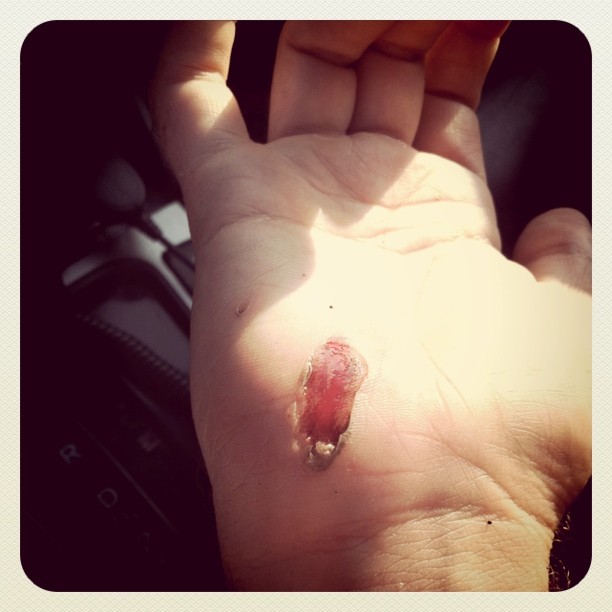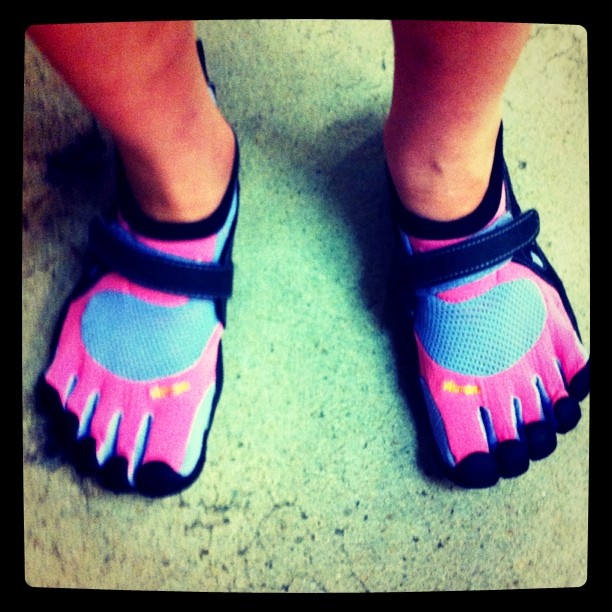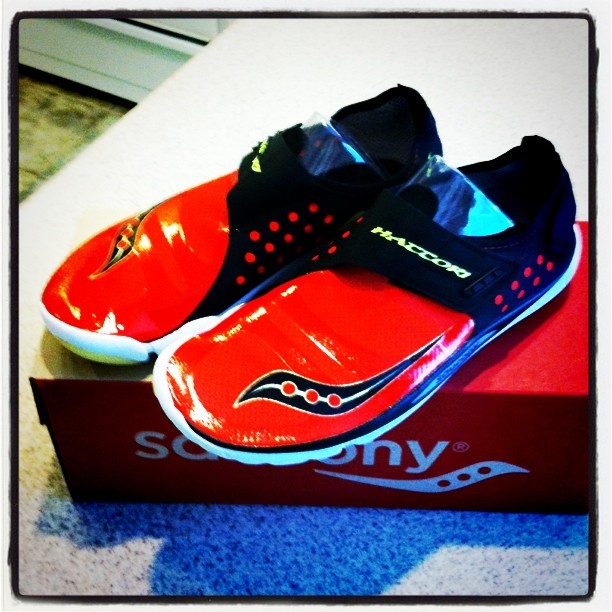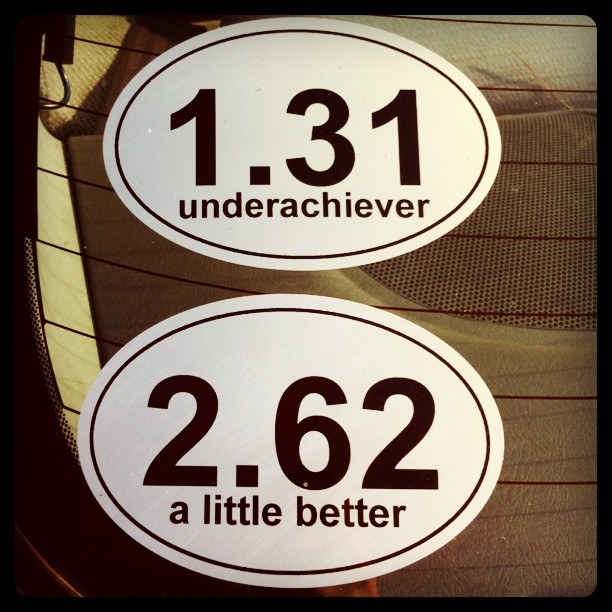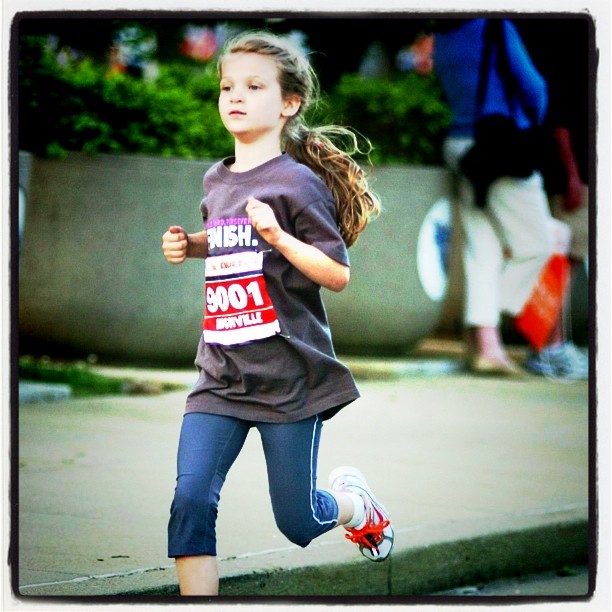I noticed one of your running friends has the email quickchic…am thinking of changing my email to molassesmama
Log for July 4th – Training for Bank of America Chicago Marathon on October 9th. Goal for the fall and winter marathon season is to break 3:15 for the first time.
Monday
- 12.1 mile tempo run – Ran with Ed, Grady, Dawn and John on Old Natchez and Del Rio. Took the first 3 miles as an easy warmup at about 9 minute avg pace. Next 3 miles got progressively faster, and did the last 6 all well under 8 minute avg pace. Best I’ve felt on a run in a long time. Overall average pace was 8:12 per mile.
- 2.25 mile walk – with Olivia and the girls in PW Park.
- No cross training – Had a July 4th event that took all evening, so was not able to do any cross training.
I finished tweaking my training plan for the 2011 Bank of America Chicago Marathon this afternoon. It is 14-weeks, and begins tomorrow. While there are some deviations (i.e. recovery weeks, taper, etc.), the general template is as follows for Running and Cross Training:
Running
- Mon: 5 to 7-Miles – Trails
- Tue: 7 to 11-Miles – Tempo
- Wed: 4 to 6-Miles – Recovery
- Thu: 5 to 7-Miles – Track
- Fri: 4 to 5-Miles – Barefoot
- Sat: 14 to 22-Miles – Moderate or Interval Workout
- Sun: Rest
Cross Training
- Mon: P90X – Legs & Back
- Tue: Insanity – Plyo Cardio Circuit
- Wed: P90X – Shoulders & Arms (1/2) + Ab Ripper X
- Thu: P90X – Chest & Back (1/2)
- Fri: P90X – Ab Ripper X
- Sat: P90X – X Stretch or Yoga
- Sun: Rest
Let me know if you have any questions or feedback. Also let me know if you want a copy of the full plan in spreadsheet format. I would be happy to share.
My goal for this fall and winter marathon season is to break 3:15:00 for the first time. 3:15 was my goal when I ran the Twin Cities Marathon last October, and I was able to hold that pace for 22 miles before I hit the wall and never recovered (Finished in 3:25:38). I did not try for 3:15 again last season, but did set my current PR of 3:24:13 in San Antonio 6 weeks later. Last year 3:15 would have been a BQ for me, but with the revised standards it is now 3:10. However, I know that improving upon my PR by 9 minutes will be hard enough without the added pressure of an extra 4 minutes. Also, even if I did qualify, my dad and I have a big golf trip planned for Scotland next April during the same time as Boston.
This season, I’m tentatively scheduled to run 4 full marathons, and I’m going to try and not overemphasize any one race. There are so many factors outside of my controls (e.g. weather), so my goal is to break 3:15 in any one of those races.
My first shot will come at the Bank of America Chicago Marathon on October 9th. My training program for Chicago starts tomorrow, and at this moment I’m making a few last minute adjustments to my schedule. I plan to chronicle my journey toward 3:15 on my blog over the coming months.
I will do today what you won’t, so tomorrow I can do what you can’t
The Saucony ProGrid Peregrine received the Runner’s World Editor’s Choice award in their April, 2011 Trail Shoe Guide. They were designed in the same vein as the highly successful Saucony ProGrid Kinvara road shoe with a low profile sole and only a 7mm drop between heel and forefoot.
I had been in the market for new trail shoes for the past several months, as my Nike Pegasus Trails were just not getting the job done. I saw the Peregrines in Runner’s World, and was able to talk to a a Saucony rep about them at the 500 Festival Mini Marathon Expo on May 6th. We actually started off talking about my experience with the Kinvara, which I started using last fall. He recommended that since I was such a big fan of the Kinvara that I try out the Peregrines as a trail shoe. I received my pair a few weeks ago, and have now completed two trail runs of 6 and 7 miles on fairly difficult terrain.
The Peregrines only weigh 9.1 oz and the fit is very snug throughout the upper, which is vital for a trail shoe. The upper material is extremely comfortable, and the low profile of the sole makes the Peregrine feel extremely stable, even on very rough terrain. The lug pattern on the out-sole does a great job of protecting the foot, and providing traction on most surfaces. The only time I have slipped in these shoes was on a large smooth rock.
The tongue is gusseted to prevent debris from entering the shoe, and it is only selectively padded so as not to add undue weight. What is amazing is that even though the Peregrine is extremely light-weight for a trail shoe, it doesn’t seem to have any of the drawbacks you might expect (e.g. limited cushioning, poor traction, etc.) The only negative thing I can possibly say about the Peregrine has to do with the laces. I’ve had a very difficult time keeping them tied, even with a double-knot.
The fit of the Peregrine is fairly narrow, so it might not work if you have a wide foot. Also, I would recommend going 1/2 to a full size up from normal as they tend to run small.
Overall, the Saucony Peregrine is a pleasure to run in, and I look forward to many trail runs in these fantastic shoes.
My Fall and Winter race schedule is beginning to take shape. As of right now it tentatively includes 3 full marathons, 2 half marathons, a 5-miler, and a 193-mile relay. I would like to add a 4th full marathon in the late November / early December time-frame, but I’m having trouble deciding which one to do. Here’s what I’ve got so far:
- Tupelo 14.2 Miler – September 4, 2011
- Bank of America Chicago Marathon – October 9, 2011
- Murfreesboro “Middle” Half Marathon – October 15, 2011
- Ragnar Relay Tennessee (Tentative) – November 4-5, 2011
- Boulevard Bolt 5 Miler – November 24, 2011
- Nov / Dec Marathon ???
- P.F. Chang’s Rock n’ Roll Arizona Marathon – January 15, 2012
- Rock n’ Roll New Orleans Marathon – March 4, 2012
Anybody have a recommendation on a great full marathon in the late November / early December time-frame (preferably easy travel from middle Tennessee)?
This morning was my first chance to run in the new Saucony Hattori’s that arrived on Wednesday. The Hattori’s are Saucony’s first entry into the zero-drop, “minimalist” category. I saw these shoes last month in Runner’s World for the first time, and was able to talk with a Saucony rep about them at the 500 Festival Mini Marathon Expo on May 6th. They only weigh 4.4 oz and the fit is much more like a sock than a running shoe.

I have been really wanting to incorporate some “minimalist” running into my training program in order to strengthen my feet and lower legs and to improve my overall running form. I’ve received lots of advice about taking it very slowly, and not trying to do too many miles too fast.
My “normal” training shoe for the past 3 years has been the Nike Zoom Vomero, which is almost opposite of a “minimalist” shoe. Last fall, I added the Saucony Kinvara to my training for track days and short races. These shoes weigh only 7.7 oz, and I have now completed a 1/2 marathon in them. I’m hoping to make them my full-time training shoe later this year. For the Hattori’s, I decided to begin running in these shoes once per week on a recovery day.
Before trying out the Hattori’s, I asked a few people about whether or not I should wear running socks, and got answers both ways. I tried walking around the house with and without socks and decided to try my first run barefoot (though I did use some Body Glide in potential blister areas).
My goal today was to do 3 to 4 very easy miles after a fairly hard track workout last night. I also selected a route that was flat so as to not put any extra stress on my feet and lower legs. As I started out, it was immediately noticeable that I would need a very short stride to keep from pounding my feet. The shoes actually felt really good, and running in them was quite enjoyable. The fit is snug, and is enhanced by the velcro straps at the top and the heel.
They do have a barefoot-type feel to them, though they have a little more cushioning than I was expecting. It was obvious that my feet were much more involved in the running motion, and my lower legs began feeling fatigued by the end of the third mile.
During mile 4, I felt hot spots on the back of my left heel and the top of my left big-toe. The heel turned out to be a small blister, and the toe just has some minor irritation. This was a little disappointing since I really enjoyed running without socks. However, I did miss both of these spots with the Body Glide that I applied before the run. Not sure if I’ll switch to socks or not for next week’s run in the Hattori’s, but definitely plan to continue using them. If I do add socks, it will have to be something that is super, super thin. Anybody have suggestions for a super thin running sock?
Overall, the experience was very positive, and I really like the shoes. It is now 11pm, and my calves are noticeably sore which is quite unusual for an easy, 4-mile run. Really excited to add these to my shoe rotation.
UPDATE: You can find my updated impressions on the Saucony Hattori by going HERE.
There is no such thing as bad weather, just soft people.
Thank you very much….I’ll follow you in return, and look forward to reading your posts.
Earlier today a good friend of mine asked me for some advice on dealing with shin splints. I put together a list of things that have worked for me in the past and sent it over to him. A little while afterword I thought this would also be a good thing to share with others.
Shin Splints are often caused by increasing your running mileage too fast without properly cross training the muscles opposing the calf…therefore creating a muscle imbalance that leads to inflammation and discomfort.
You can reduce the inflammation by rest / ice / NSAIDs (advil, alleve, etc.), but strengthening exercises for the muscles in the shin will also help dramatically. Here are a few suggestions:
1. While sitting, tap out the ABCs with your big toe. You can do this while you are working, eating, whenever
2. Walk around on your heels with your toes off the ground. Do three sets of 25 steps. One with toes pointed in, one pointed out, one straight.
3. Lean against a wall, lift one leg a little off the ground, and then slowly flex your toe toward your shin (Dorsiflex) 25 times. Repeat with other leg.
4. Same as #3, but do it rapidly
5. Lay down flat on your back, and flex both feet (Dorsiflex), and hold for 5 minutes.
Hope this is useful for anyone else that is struggling with shin splints.
I appreciate all of the response to my question a couple of days ago regarding incorporating barefoot type running into my training. As a follow-up. I have been using the @Saucony Kinvara since last fall and am slowly transitioning to it as my full-time trainer. For those of you who run in Kinvaras….
- Am I negating the benefit of the Kinvara if I replace the insole? I typically use the Lynco 405, and have been using this with the Kinvara.
- How many miles should I expect out of the Kinvara? I have only been using them once or twice per week so far, and my first pair has around 200 miles on them. They appear to still be in good shape, but I’ve read a lot about durability issues.
- I have completed a 1/2 marathon in the Kinvaras, and they were great (Though my feet were sore the next day). Has anyone tried using them in a full marathon? If so, what are your thoughts (trying to decide about using them at Chicago in Oct)?
Started following a couple of weeks ago, and just followed your personal blog. Best of luck with your training.
I am seriously considering adding one day of easy running each week with a “barefoot” type shoe like the @saucony Hattori. Anybody have any experience with this? If so, what were your results like? Did it improve your overall running performance or lessen your susceptibility to injuries? What shoes did you use?
Spencer White, Head of the Biomechanics Lab @Saucony, explains Minimalist footwear and some of the things you should think about before taking the leap.
I started using the original Saucony Kinvara’s last fall, and just ran a 1/2 marathon in them 3 weeks ago. I’m thinking that eventually I’ll make these my regular training shoes. I also just purchased the Saucony Peregrine’s (not mentioned in the video) for trail running, and am intrigued by the Hattori’s.

